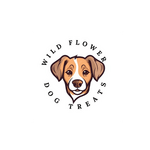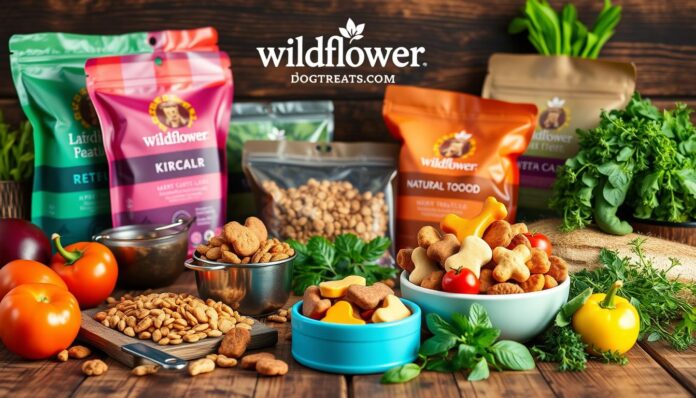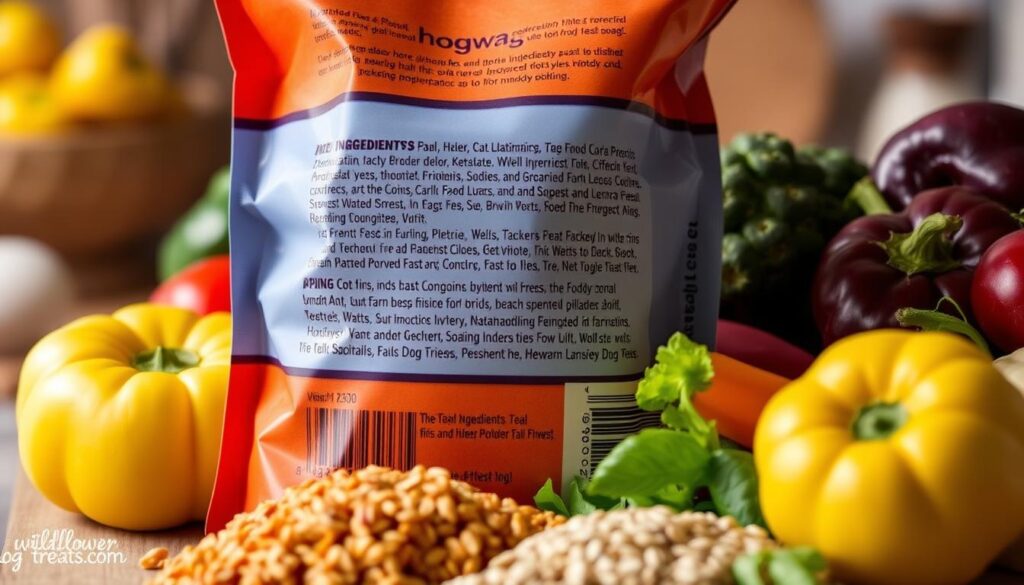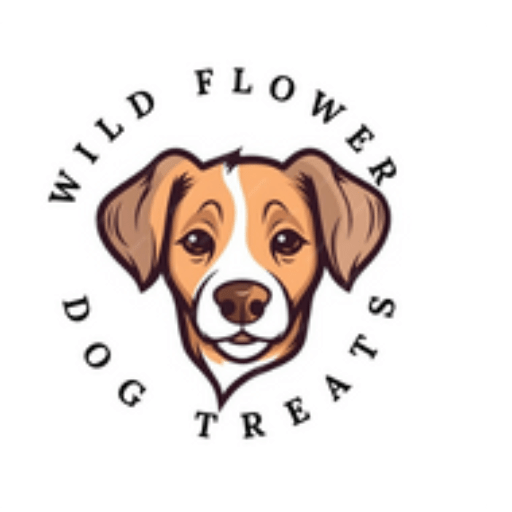About 56% of dogs in the U.S. are overweight or obese. This shows how important a healthy diet is. Pet owners spend around $31 billion on dog food each year. This article will help you choose the best dog foods for your pet’s health and your budget.
Finding the right food for your dog is key to their well-being. With the pet food market growing fast, making smart choices is essential. We’ll look at the latest best dog foods, including farmer’s dog food, royal canin dogfood, and blue buffalo dog food. Whether you’re looking for victor dog food, ollie dog food, open farm dog food, or organic dog food, this guide will help you make the right choice for your pet.
Key Takeaways
- Overweight and obesity are major health concerns for dogs, emphasizing the importance of a balanced diet.
- Pet owners spend billions annually on dog food, underscoring the financial and health implications of proper nutrition.
- This guide covers a wide range of high-quality dog foods, from leading brands to specialized formulas, to help you make informed choices.
- Factors like dog food for puppies, grain free dog food, and high protein food will be explored to cater to your dog’s unique needs.
- The article will delve into the options of homemade dog food, fresh pet dog food, and popular commercial brands like purina one dog food and science diet dog food.
Understanding the Importance of Proper Nutrition for Dogs
The Impact of Diet on Overall Health and Wellbeing
As a responsible pet parent, it’s key to feed your dog right. A good diet boosts their energy, immune system, and skin health. It also helps their brain work better.
Experts say that dog food goes through strict checks to be safe and healthy. Choosing a “complete and balanced” food means your dog gets all they need without extra supplements.
The Consequences of Feeding Subpar Dog Food
But, bad food can harm your dog. It can cause weight issues, skin problems, and even organ damage. Proper nutrition is the foundation for a healthy, happy dog.
“Protein, fats, carbohydrates, vitamins, and minerals in a dog’s diet are crucial for maintaining muscle tone, energy levels, brain function, skin and hair health, and disease prevention.”
Knowing how diet affects your dog’s health helps you make better choices. A good diet means a happy, healthy life for your furry friend.

Dog foods: Decoding the Labels and Understanding Ingredients
Choosing the right dog food can be tough. But, knowing how to read labels helps a lot. There are important things to look for when reading dog food labels and understanding ingredients.
First, check for the AAFCO (Association of American Feed Control Officials) statement. This shows the food meets standards for dogs at different life stages. The 95% Rule by AAFCO means foods like “Chicken for Dogs” must have at least 95% of the named ingredient.
The ingredient list shows ingredients from most to least by weight. So, the first three are the most important. The 25% Rule says foods named “Beef Dinner for Dogs” must have at least 25% of the named ingredient, not counting water for processing.
Dog food labels also have guaranteed analysis. This shows percentages of protein, fat, fiber, and water. This info helps you see if the food is right for your dog’s size, weight, and life stage.
By understanding labels and ingredients, you can choose the best food for your dog. This ensures they get the nutrition they need to be healthy.
“Selecting dog food based on life stage is important, such as puppies, adults, or all life stages. Food should be formulated to meet industry standards like the AAFCO standard for nutrition.”
Being an informed consumer helps your dog get the best nutrition. This is key for their health and happiness.
Evaluating Different Types of Dog Food
Choosing the right dog food can be tough. There’s dry kibble, wet, and canned options, each with its own good and bad points. Knowing what each type offers can help you pick the best for your dog’s needs.
Dry Kibble: Pros and Cons
Dry dog food, or kibble, is a favorite among many pet owners. It’s easy to store, lasts a long time, and is cheaper than wet or canned food. But, some dogs might not like it as much, and it doesn’t have as much moisture as other types.
Wet or Canned Dog Food: Benefits and Drawbacks
Wet or canned dog food can be more appealing to dogs. It comes in different flavors and textures. It also has more moisture, which is good for dogs who need to drink more. But, it’s pricier and doesn’t last as long as dry kibble.
Choosing the right dog food depends on your dog’s likes and needs. Talking to your vet can help find the right mix of dry, wet, or canned food. This ensures your dog gets the nutrients they need for health and happiness.
“The key to a healthy, happy dog is providing a balanced and nutritious diet that caters to their specific needs.”
Top-Rated Brands for Nutritious Dog Food
Choosing the right dog food is crucial for your pet’s health. Some brands are known for their quality and nutritional value. Here are some top picks for your furry friend:
- Royal Canin – A vet-recommended brand with formulas for all dog sizes and needs.
- Hill’s Science Diet – Offers a puppy formula with small kibble and essential nutrients for growth.
- Purina Pro Plan – Great for dogs with sensitive stomachs and active pups, with special formulas.
- The Farmer’s Dog – A service that delivers fresh, natural meals, loved by many pet owners.
| Dog Food Brand | Recommended by Experts | Addresses Specific Needs | Average Price Range | Adheres to AAFCO Standards | Average Calories per Cup | Caters to Different Dog Sizes | Subscription-Based Delivery |
|---|---|---|---|---|---|---|---|
| Royal Canin | ✓ | ✓ | $18.99 – $84.68 | ✓ | 392 kcal | ✓ | – |
| Hill’s Science Diet | ✓ | ✓ | $18.99 – $84.68 | ✓ | 392 kcal | ✓ | – |
| Purina Pro Plan | ✓ | ✓ | $18.99 – $84.68 | ✓ | 392 kcal | ✓ | – |
| The Farmer’s Dog | ✓ | ✓ | $730 – $7300 annually | ✓ | n/a | ✓ | ✓ |
These best dog food brands and top dog food brands are known for their quality. They offer nutritious options for all dogs. Choosing one of these brands ensures your pet gets the best nutrition.
The Benefits of Grain-Free and Limited Ingredient Diets
For dogs with food sensitivities or allergies, grain-free and limited ingredient diets are great. These special formulas help avoid common allergy triggers and digestive problems. This way, your furry friend can feel their best.
Addressing Food Allergies and Sensitivities
Grain-free dog foods remove common allergens like wheat, corn, and soy. These can cause itching, loose stools, and vomiting in some dogs. Limited ingredient diets, with just one protein source and a few ingredients, lower the risk of food reactions.
Prescription hypoallergenic diets, like Purina Pro Plan’s Sensitive Skin & Stomach formula, are vet-recommended. They have strict protocols and are not linked to Dilated Cardiomyopathy (DCM) in dogs. This is a concern with some grain-free and boutique diets.
Limited ingredient dog foods are also good for dogs with sensitive stomachs. The simple ingredient list reduces the risk of vomiting or diarrhea. Each ingredient in these diets is chosen for its nutritional value.
| Advantages of Grain-Free and Limited Ingredient Diets |
|---|
| – Eliminate common allergens like wheat, corn, and soy |
| – Feature a single protein source and limited ingredients |
| – Reduce the risk of triggering food-related reactions |
| – Benefit dogs with sensitive stomachs or food allergies |
| – Provide complete and balanced nutrition with fewer ingredients |
When switching your dog to a grain-free or limited ingredient diet, work with your vet. This ensures your dog gets the right nutrition. The right diet can make your furry friend happier and healthier.
Incorporating Fresh and Natural Ingredients
Pet owners can add fresh, natural ingredients to their dog’s diet. Homemade dog food, made with quality ingredients like meat, vegetables, and fruits, is nutritious. It’s tailored to your pet’s needs.
The Advantages of Homemade Dog Food
Fresh and natural diets improve your dog’s health. They can lead to better digestion, stronger immune systems, and healthier skin and coats. But, it’s important to talk to a vet or animal nutritionist. They can make sure your homemade recipes are balanced.
Companies like The Farmer’s Dog offer fresh, ready-to-eat dog food. It’s tailored to your pet’s needs. This makes adding fresh dog food and natural dog food easy.
“A balanced, nutritional diet is crucial for a dog’s health.”
Homemade homemade dog food is rewarding but needs careful planning. Make sure your dog gets all the nutrients. A professional can help create a recipe that meets your pet’s needs.
A dog’s needs change based on their activity level, age, and size. Adding fresh, natural ingredients to their diet helps their health. It makes them happier and healthier.
Tailoring Nutrition to Your Dog’s Life Stage
Dogs need different foods as they grow from playful puppies to wise seniors. It’s important to pick the right dog food for different life stages. This means choosing puppy food, adult dog food, or senior dog food.
Puppies need lots of calories, protein, and nutrients for growth. Foods like Hill’s Science Diet Puppy Small Bites are made just for this. Adult dogs do well on balanced foods like Royal Canin’s Small Breed Adult.
As dogs get older, their food needs change. Senior dog foods have fewer calories and help with joint health. This helps with age-related issues and less activity.
“Providing the right nutrition at each stage of your dog’s life is essential for their overall wellbeing and longevity.”
Choosing the right food for your dog’s life stage is key. It ensures they get the nutrients they need to be happy and healthy. This is true for puppies, adult dogs, and seniors.
Choosing the Right Portion Sizes
Finding the right portion sizes for your dog is key to keeping them healthy and preventing obesity. Dog food packages often have feeding guidelines based on your dog’s weight and size. These guidelines help ensure your dog gets the right amount of calories and nutrients.
Too much food can lead to weight gain and health problems. So, it’s vital to follow these guidelines and watch your dog’s body condition closely.
Several things affect the ideal portion sizes for your dog. These include their breed, how active they are, and their life stage. Generally, big and giant breed puppies need three meals a day until they’re 4 months old. Adults and seniors can have two to three meals.
Small and medium breed puppies up to 4 months old should also have three meals a day. Adults and seniors should have two meals. Toy breed puppies up to 4 months old need four to five meals a day. Those 4-6 months old should have three meals, and dogs 6 months and older should have two meals.
Avoiding Overfeeding and Obesity
Overfeeding is a big problem, with 59% of dogs being overweight or obese, says the Association for Pet Obesity Prevention. It’s important to watch your dog’s portion sizes and calorie intake to avoid this. Seniors, aged 7 and older, may need special diets for weight management or because they prefer wet food.
“A dog food labeled as ‘beef’ must contain at least 70% beef, while terms like ‘beef dinner,’ ‘beef entrée,’ or ‘beef platter’ require only 10% beef, and ‘with beef’ only 3% beef.”
The Association of American Feed Control Officials (AAFCO) has strict rules for dog food. These rules ensure the food is complete and balanced. By following these guidelines and monitoring your dog’s portion sizes, you can prevent obesity and keep your dog healthy and happy.
Transitioning to a New Dog Food
Switching your dog’s food needs care, but it can be done smoothly. Start by slowly introducing the new food. This lets your dog’s stomach get used to it without upset.
Start by mixing a small amount of the new food with your pup’s current diet. Gradually increase the new food over 7-10 days. This slow switching dog food method helps your dog’s stomach adjust without upset.
- Begin with a mix of 25% new food and 75% old food on day one.
- Gradually increase the ratio to 50% new and 50% old by day three.
- By day five, switch to 75% new food and 25% old.
- Finally, on day seven, transition to 100% of the new dog food transition.
Dogs with sensitive stomachs or allergies might need a longer transition. Watch for any signs of upset stomach. If problems last, talk to your vet.
| Transition Timeline | New Food Ratio | Old Food Ratio |
|---|---|---|
| Day 1 | 25% | 75% |
| Day 3 | 50% | 50% |
| Day 5 | 75% | 25% |
| Day 7 | 100% | 0% |
By slowly introducing the new food, your dog’s stomach can adjust. This ensures a smooth transition. With patience and attention, you can give your dog a healthier meal.
Addressing Special Dietary Needs
Every dog is different when it comes to food needs. Some dogs have special health conditions, allergies, or sensitive stomachs. Knowing what your dog needs helps them stay healthy and happy.
Dog Food for Specific Health Conditions
Dogs with health issues need special diets. For example, dogs with sensitive stomachs might do well on Purina Pro Plan’s Sensitive Skin & Stomach dry dog food. It has a single protein source and avoids common allergens. Dogs with joint problems can benefit from foods with glucosamine and chondroitin, like Purina Pro Plan’s Sport Performance line. Always talk to your vet to find the best food for your dog’s health needs.
| Health Condition | Recommended Dog Food |
|---|---|
| Allergies | Purina Pro Plan Sensitive Skin & Stomach |
| Joint Issues | Purina Pro Plan Sport Performance |
| Pancreatitis | Low-fat, low-protein diet |
Meeting your dog’s special dietary needs is key to their health. It helps prevent more problems. Always check with your vet to make sure your dog gets the right food for their needs.
Reading and Understanding Dog Food Labels
Choosing the right dog food means reading labels carefully. The ingredient list shows the food’s quality. Look for real ingredients like meat, veggies, and fruits. Avoid fillers, byproducts, and artificial stuff.
The label also tells if the food is complete and balanced. Check the calorie content and serving sizes. This ensures the food fits your dog’s needs.
- Understand the order of ingredients: Ingredients are listed in descending order by weight, with the primary ingredient being the most abundant.
- Look for high-quality, whole-food sources: Seek out real meat, vegetables, and fruits, and avoid fillers, byproducts, and artificial additives.
- Check the nutritional adequacy statement: Ensure the food meets AAFCO standards for complete and balanced nutrition.
- Pay attention to calorie content and serving sizes: This will help you determine the appropriate amount to feed your dog.
- Consider any special diet claims: If your dog has specific dietary needs, choose a food that caters to those requirements.
By understanding how to read dog food labels and the key ingredients, you can choose the best for your dog. This ensures they get the nutrition they need.
| Nutrient | Minimum Requirement | Maximum Limit |
|---|---|---|
| Protein | 18% | N/A |
| Fat | 5.5% | N/A |
| Fiber | 2.5% | N/A |
| Moisture | N/A | 78% |
Remember, understanding dog food ingredients and how to read dog food labels are key. They help ensure your dog gets the right nutrition for their health and happiness.
“Proper nutrition is the foundation for a healthy, happy dog. By understanding the information on dog food labels, you can make informed choices that support your furry friend’s long-term well-being.”
The Role of Supplements in a Balanced Diet
A high-quality dog food should give your dog all the nutrients they need. Dog food supplements can help support their health. Omega-3 and omega-6 fatty acids keep their skin and coat healthy. Probiotics and digestive enzymes aid in gut health.
For older dogs or those with joint issues, supplements for dogs with glucosamine and chondroitin can help. Antioxidants in supplements fight inflammation and support aging dogs. Always talk to your vet before adding dog food supplements to your dog’s diet.
Studies show up to 90% of pet supplements have extra nutrients like vitamins and minerals. About 10% of a pet’s daily calories should come from snacks and treats. Too much of certain vitamins or minerals can harm pets.
The demand for dog supplements has skyrocketed in recent years. The National Animal Supplement Council (NASC) offers a seal for quality products. This helps consumers find reliable supplements.
“Supplements can play a supportive role in a dog’s overall health, but it’s crucial to consult a veterinarian before introducing any new products.”
In summary, while dog food should cover most nutritional needs, some dog food supplements can offer extra benefits. Always consult with your vet to ensure any supplements are safe and right for your dog.
Hydration: The Importance of Clean Water
Keeping your dog hydrated is as important as feeding them right. Make sure they always have clean, fresh dog water. Dogs lose a lot of water when they pant. Having enough hydration helps their organs work well, keeps their body temperature right, and stops urinary tract infections.
An adult dog is about 70% water. They need 0.5 to 1 ounce of water for every pound of body weight each day. A 70-pound Labrador should drink 35 to 70 ounces of water every day. Watching how much water your dog drinks can tell you if they’re sick.
- Canned dog food has 70 to 80 percent moisture. This can help your dog drink more water.
- Putting water bowls in different spots, using a drinking fountain, or letting them drink from a faucet can help.
- Remember, your dog’s activity level, where they live, and any health problems can affect how much water they need. Make sure to refill their bowl often during the day.
If your dog shows signs of severe dehydration, like wobbliness or excessive panting, get them to the vet right away. Keeping your dog hydrated is key to their health and happiness.
Conclusion: Prioritizing Your Dog’s Nutritional Needs
As a pet owner, giving your dog the right food is key. Knowing about dog food options and what’s in them is crucial. This helps keep your dog healthy and happy for a long time.
Choosing the right food for your dog is important. It could be a top-notch commercial brand, a fresh service, or a homemade meal. Making sure your dog gets the right dog nutrition will make them lively and full of energy.
A good diet is the base for a healthy dog. So, take your time to pick the best food for your dog. The Association of American Feed Control Officials (AAFCO) has rules to help pick a balanced diet for your dog.
Your dog’s health and happiness should always come first. By focusing on their nutrition, you’ll make them even happier and strengthen your bond. Let’s celebrate your dog’s health and start a journey of great dog nutrition together.
FAQ
What are some of the top-rated dog food brands recommended by experts?
Experts say Royal Canin, Hill’s Science Diet, Purina Pro Plan, and The Farmer’s Dog are great. NBC Select staffers agree, saying these brands offer nutritious food for dogs.
What are the benefits of grain-free and limited ingredient dog foods?
Grain-free foods help dogs with allergies by avoiding wheat, corn, and soy. Limited ingredient diets use one protein source and a few other ingredients. This can help with itching, loose stools, and vomiting.
How can I incorporate fresh and natural ingredients into my dog’s diet?
You can make homemade dog food with meat, veggies, and fruits. The Farmer’s Dog offers a service that delivers fresh, customized dog food based on your pet’s needs.
How do I determine the right portion sizes for my dog?
Dog food packaging has feeding guides based on your pet’s weight and size. These guides help ensure your dog gets the right amount of calories and nutrients. Always follow these guidelines and watch your dog’s body condition to avoid health problems.
What should I look for when reading dog food labels?
When choosing dog food, read labels carefully. Look for real, whole foods and avoid fillers and artificial additives. The nutritional adequacy statement confirms the food meets AAFCO standards for nutrition.
How can I transition my dog to a new dog food?
Transitioning your dog to a new food slowly is key to avoid upset stomachs. Start by mixing a small amount of the new food with their current diet. Gradually increase the new food over 7-10 days to help their digestive system adjust.
How important is proper hydration for my dog’s health?
Hydration is as important as a balanced diet for your dog’s health. Make sure your dog always has access to clean, fresh water. This supports organ function, regulates body temperature, and prevents urinary tract infections.





Üsküdar pimaş tıkanıklığı açma Su faturanız artıyor mu? Üsküdar su kaçağı tespiti ile fark edilmeyen kaçakları noktasal olarak tespit ediyoruz. https://ozelim.org/sosyal/blogs/783/%C3%9Csk%C3%BCdar-Su-Ka%C3%A7ak-Tespiti